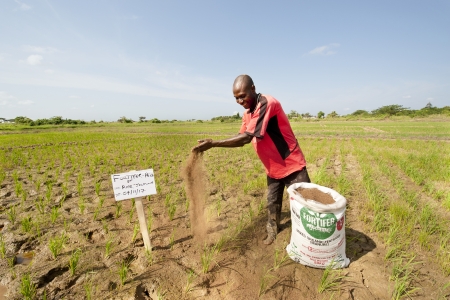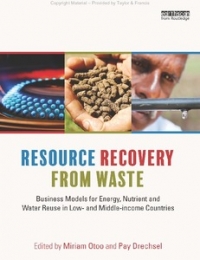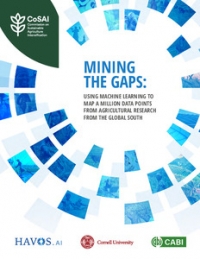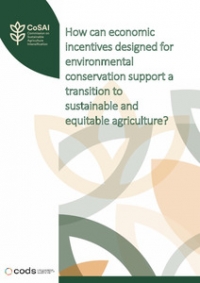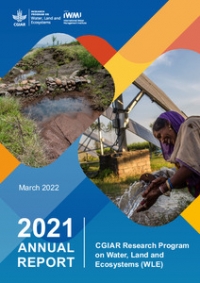Cities, like any area where population densities peak, are hot spots for the spread of epidemics. This is even more pronounced in those that attract many rural-urban commuters. Or in international travel destinations. Clearly, if we are to control the spread of COVID-19, any countermeasures must focus on restricting some aspects of cities and their connectivity.
Unfortunately, such measures will hit the central nerve systems vital to urban resilience. Much more than rural villages, the urban metabolism depends on its surrounding region for key resources, such as food and water. This dependence puts locked-down cities across the globe under risk.
We have seen similar situations when supply chains were affected by political or economic crises, or the increasingly common impacts of extreme climate events. As much as water matters, urban food supply will also prove challenging, given the complexity of different food source areas and formal and informal food supply systems. And the vulnerability of these varies greatly among commodities.
The International Water Management Institute (IWMI), through the CGIAR Research Program on Water, Land and Ecosystems (WLE) works on strengthening ‘rural-urban linkages’, aiming to make urban food systems more resilient to shocks and stresses.
One of the solutions, studied in collaboration with the Food and Agriculture Organization of the United Nations (FAO) and the Global Partnership on Sustainable Urban Agriculture and Food Systems (RUAF), is to ensure cities in Africa and Asia can understand where their urban food supplies are vulnerable. We do this using a common international methodological and indicator framework, which measures data like the strength of distribution chains for particular sectors or commodities, health and food safety aspects, or how much food is being wasted. Policy dialogues and capacity development help ensure city regions can use the tools.
To give an example, we studied the dependence of urban centers on their ‘hinterland’ over several seasons for more than 50 commodities in several cities in West Africa. According to an analysis of more than 40,000 records of food flows for two cities, about half of basic urban food needs were met by farming within a distance of 100 km. Extending to 300 km, 80-90% of all food items were sourced for Tamale, Ghana and 60-80% for Ouagadougou, Burkina Faso. In comparison, the average processed food item found in shops and supermarkets had traveled 3,700 km before reaching local shelves. On its way, food flows are facing more human barriers than expected, as a recent IWMI/WLE supported study in West Africa showed.
Interrupting rural-urban linkages can have stark impacts on food prices – and thus on the poor. In Asia, Sri Lanka’s largest city Colombo is facing such a situation. While under the COVID-19 threat, traffic between districts is completely banned across the country, except for essential services, even this was not possible four years earlier after Sri Lanka was hit by a cyclone that caused severe flooding, storm surges and landslides. Colombo’s supply of vegetables coming from upcountry were seriously affected. Vegetable prices quadrupled, while ocean fish supply dropped by 75%. The mainstream supply chains, which serve the middle- and low-income communities, needed up to two months to recover.
The vulnerability of various production systems and likely bottlenecks along the supply chains demands specific investments. And this is a global issue. Even before COVID-19, 70% of cities were already at risk of – or already dealing with – effects of climate change and related anomalies challenging urban resilience.
A common recommendation for less vulnerable rural-urban regions is promoting cultivation within and near the city. This can make a significant contribution to urban food supply by providing commodities that are important for a balanced diet. For example, IWMI studies show that irrigated urban agriculture could produce as much as 90% of the leafy vegetables consumed in a city, particularly in Africa.
In Cali, Colombia, our WLE partner, the International Center for Tropical Agriculture (CIAT) supported an urban food policy which includes seeking ways to create shorter supply chains, so that food reaches the final consumer cheaper and in better quality. Neighborhood shops, mobile markets, and school gardens will be supported to provide quality vegetables at affordable prices. These new systems will help Cali endure broken city-region linkages, whatever the causes.
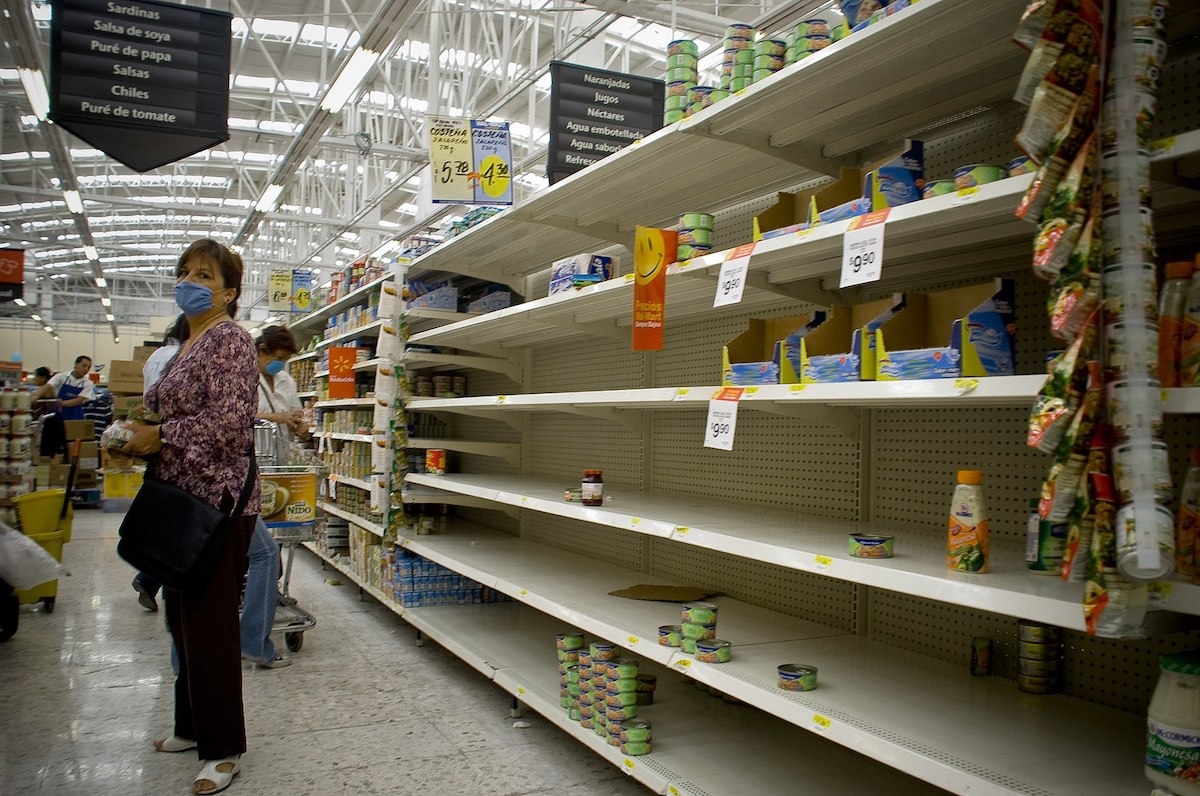
It is thus no surprise that during political and economic crises, peri-urban agriculture is a popular strategy for maintaining at least some urban food supply. We have seen this in cities around the world. In Freetown, Sierra Leone, urban agriculture played a significant role during the civil war when the rural-urban road network was blocked. In Monrovia, it was promoted under the 2014 Ebola outbreak. In fact, also under COVID-19 lockdowns, many urban dwellers in Africa and Asia revisit the benefits of urban farming and shorter food chains, supported by neighborhood initiatives, like in Colombo, that sell locally grown food from cars within locked-down communities.
Yet, despite its importance, urban agriculture receives very limited policy support in many countries where urban farmers struggle with lack of suitable land, uncertainty about land tenure or insufficient access to irrigation water of appropriate quality. The last point matters a lot in low-income countries where wastewater collection and treatment are usually limited. The result is severe water pollution with excreta, allowing pathogens to enter the food chain. Where these chains are short, like for raw eaten salad greens, they can become potential vehicles for coronavirus transmission to humans, at least through food handling. Fortunately, there are many solutions for protecting consumers even where wastewater treatment does not work.
Also vital to optimizing urban food supply is avoiding unnecessary food losses and food waste. Working with FAO, we are studying options and constraints in the city of Colombo, while also considering how to improve food redistribution and harness the circular economy. If we can reuse resources and redistribute food, cities can better cope in times when linkages are restricted.
As COVID-19 spreads further and deeper into nearly every aspect of our lives, it’s vital that we understand the role rural-urban linkages play. The virus itself will hurt many. And our efforts to contain it may seriously hinder many more. But if we take the right steps now to strengthen urban resilience, we can buffer some of its most severe impacts. Today it is COVID-19. Let’s be prepared for tomorrow.
Pay Drechsel is a senior fellow with the International Water Management Institute (IWMI) and co-leader of Sustaining Rural-Urban Linkages Research Theme of the CGIAR Research Program on Water, Land and Ecosystems (WLE). Project partners include Global Partnership on Sustainable Urban Agriculture and Food Systems (RUAF), the Food and Agriculture Organization of the United Nations (FAO) and International Center for Tropical Agriculture (CIAT).
Read more responses from CGIAR on the COVID-19 crisis here.
This article was republished in RUAF.
---
Thrive blog is a space for independent thought and aims to stimulate discussion among sustainable agriculture researchers and the public. Blogs are facilitated by the CGIAR Research Program on Water, Land and Ecosystems (WLE) but reflect the opinions and information of the authors only and not necessarily those of WLE and its donors or partners.
WLE and partners are supported by CGIAR Trust Fund Contributors, including: ACIAR, DFID, DGIS, SDC, and others.



